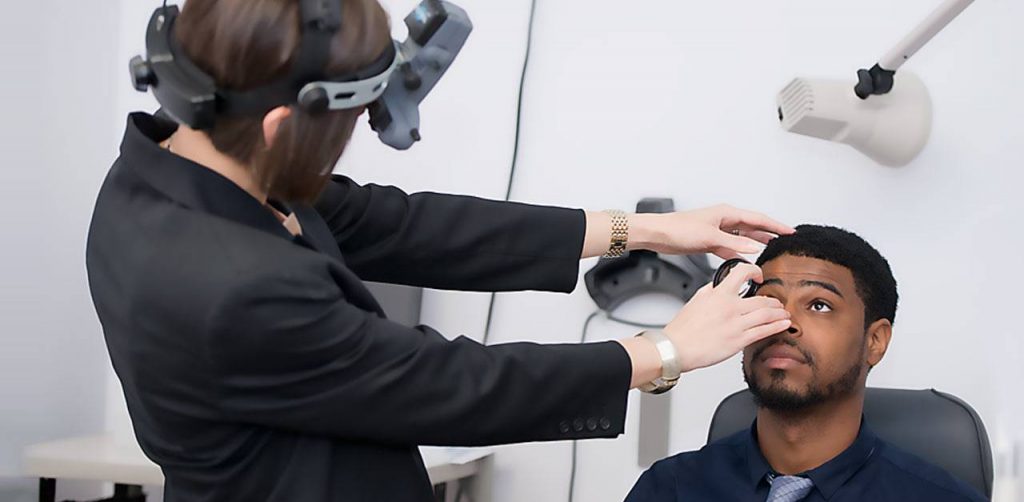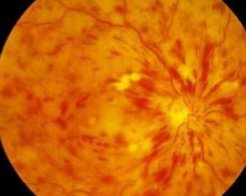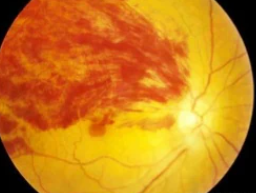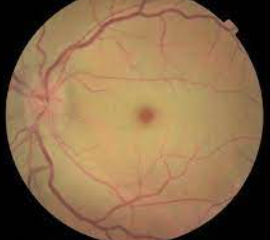Retinal holes and tears affect over 10% of the population.
The retina is the thin, inside lining of the eye that is light-sensitive and generates vision. Holes and tears that form in the retina significantly increase the risk of many retinal diseases, in particularly retinal detachment, which can cause sudden and total loss of vision.
When your eye doctor shines a bright light in your eyes, they’re conducting an examination of your eye health, including retinal diseases.
What are retinal holes and tears?
Retinal holes and tears are types of retinal conditions and are diagnosed as small breaks in the retina. Usually, holes and tears don’t immediately result in serious vision problems. However, retinal holes and tears may cause problems if fluid seeps behind the retina.
Fluid builds up behind the retina, can cause the retina to separate from the wall of the eye, damaging part of the retina.
Retinal holes and tears are urgent retinal diseases that can lead to total blindness.
What causes retinal holes and tears?
The vitreous is a clear gel-like material that fills the space between the retina and the back of the eye. This gel is attached to the retina at birth, but it separates from the retina as we become older, resulting in a posterior vitreous detachment (PVD). In most cases, this does no harm.
However, some people inherently have a more “sticky” vitreous. As the vitreous separates from the retina, it pulls, causing the retina to tear.
While retinal tears may occur as a result of eye trauma, most retinal tears occur spontaneously due to a PVD.
Another cause of a retinal hole or tear is thinning or weakening of the tissues of the retina over time.
Is there a difference between retinal holes and retinal tears?
The terms retinal hole and tears may often be used interchangeably, but there is a clinical difference.
While retinal holes develop due to progressive thinning of the retina, retinal tears develop when the vitreous pulls on the retina.
Retinal holes are typically smaller and have a lower risk of causing a retinal detachment. There are some instances where retinal holes should be treated the same as retinal tears.
What are the symptoms?
Sometimes retinal tears and holes have no symptoms. At other times, the symptoms are quite obvious, which can include;
- A dark shadow in your peripheral (side) vision
- Cloudy, blurry, or wavy vision
- Sudden floaters and flashes
If you’ve experienced any of the above symptoms, contact an eye doctor near you immediately.
SEE RELATED: Retinal Detachment
How can retinal holes and tears be prevented?
There is no way to avoid retinal holes and tears other than protecting your eyes from harm, such as avoiding high contact sports like football and ice hockey.
The best way to prevent retinal problems is to visit your eye doctor for regular exams or as soon as you notice signs of holes or tears.
How are retinal holes and tears treated?
An eye doctor will seal the retinal hole or tear to prevent them from enlarging, and to prevent the retina from detaching completely.
Three types of treatment are:
1. Cryopexy
A cryopexy uses an instrument called a cryoprobe to freeze the tissue around the hole and secure it to the inside of the eyeball.
2. Diathermy
This procedure is similar to cryopexy except that heat from an electric current is applied through a needle to seal a tear or hole.
3. Laser photocoagulation
This procedure uses highly focused beams of light to seal the tissue around the tear or hole. Following the procedure your vision may be blurred for a few hours.
Treatment for retinal tears and holes are usually successful. However, you may develop a retinal hole or tear in another part of your eye at a later point. Going for regular eye exams can help lower your risk of another tear or hole from occurring.
LEARN MORE: Guide to Retinal Diseases
Schedule an eye exam with an eye doctor near you so that you can protect your vision.









